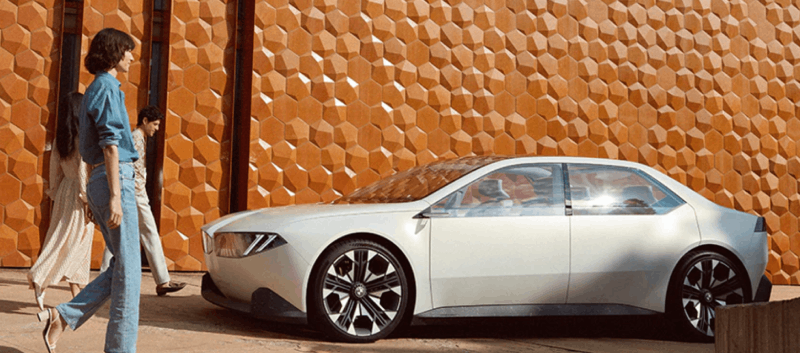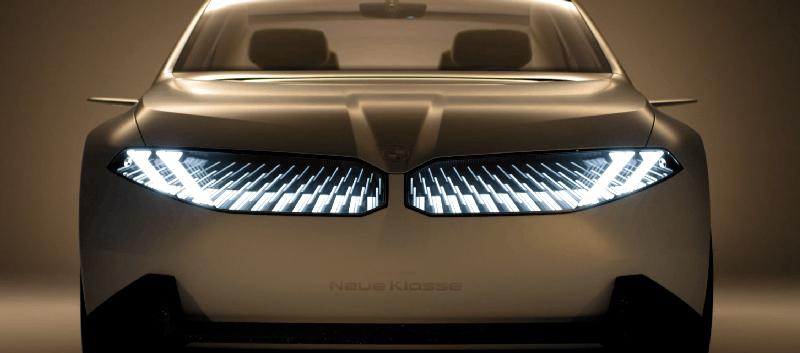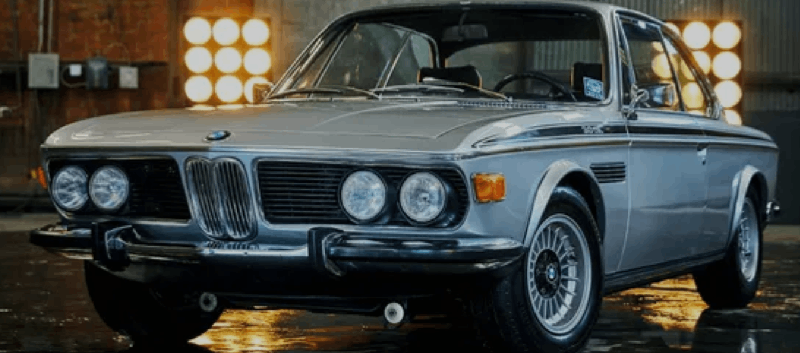
BMW’s Neue Klasse: A Turning Point
BMW has set the clock on a generational pivot. Beginning late 2025, the first Neue Klasse vehicles roll off a brand-new, fossil-free “iFACTORY” in Debrecen, Hungary, spearheaded by the iX3 — an electric SUV meant to reframe the company’s core in the EV era. Early European deliveries are slated for 2026, with pricing guidance in Europe around the high-€60Ks for the iX3 50 xDrive and U.S. arrivals following thereafter. Under the skin sit sixth-generation eDrive components, 800-volt architecture, and new large cylindrical cells designed to deliver roughly 30% quicker DC charging and about 30% more range than today’s Gen5 tech, while enabling bidirectional charging. Inside, a sweeping Panoramic iDrive/Head-Up layout debuts, moving critical info into the driver’s natural view. (BMW Group)
Beyond the SUV, BMW has also teased a Neue Klasse sedan that will revive the i3 nameplate as the electric counterpart to the 3 Series — a model family that, together with the 4 Series, remains the brand’s commercial backbone. Expect the i3 to share the platform and performance envelope of the iX3 while pushing range toward the ~400-mile mark, with a higher-performance iM3 planned to follow. (Car and Driver)

What’s selling now — and what that hints about demand
On the eve of the Neue Klasse, BMW’s sales mix tells a clear story: X-line SUVs and the 3/4 Series carry the banner. The X3 and X5 have repeatedly topped U.S. sales charts for the brand, while the 4- and 3-Series dominate among sedans/coupes. Battery-electric volumes are growing from a smaller base, with the i4 currently the most numerous EV in BMW’s U.S. mix. Globally in 2025, BMW reports year-to-date growth and a double-digit lift in BEVs, though China remains a headwind — context that helps explain why the iX3 is explicitly tasked with clawing back share there.
The takeaway for Neue Klasse demand: if BMW packages the right sizes and prices (midsize SUV and compact sport sedan) with real charging and range advantages, it’s aiming squarely at the heart of its own best-sellers — the precise places where the brand already wins. That’s why the iX3 and i3 are first up. (Reuters)

BMW has signaled that the “Neue Klasse” (literally, “New Class”) is not just another model refresh—it’s a generational pivot. While BMW has long flirted with electrification via its “i” sub-brand and plug-in hybrids, Neue Klasse is intended as the architectural, design, and software substrate for BMW’s future. Its ambitions are high: full electrification, faster charging, more range, unified digital integration, and scalability across compact to premium segments.
The first production car built on Neue Klasse will be the iX3 (NA5), slated for market introduction in 2026. Already, BMW has been road-testing prototypes and has begun manufacturing electric motors aligned with the Neue Klasse drive units. The company describes Neue Klasse as the underpinning for all future BMWs, regardless of drive system type. Thus, even future combustion or hybrid derivatives may borrow interior electronics, digital backbone, and design languages from this platform. BMW’s own timeline suggests that by 2027, as many as 40 new or updated models will incorporate the Neue Klasse or its technological offspring.

The next high-profile derivative is the i3 (NA0) sedan, often viewed as the electric successor (or companion) to the combustion 3 Series. This is a full ground-up EV, not a retrofit. It is expected to feature advanced charging speeds, bespoke battery systems, and the new operating system (BMW’s OS X or successor) that integrates over-the-air updates, intelligent features, and driver assist integration.
In short: between 2025 and 2028, BMW is aiming to transition into a brand defined by its digital / software DNA as much as by its mechanical prowess.
Which BMW Models & Sub-Brands Are Faring Best Today?
To gauge where BMW has been succeeding (or lagging) in the market, we can look at resale value trends, recent recalls, and how certain segments are being phased out.
Resale Value Leaders
Among BMW offerings, certain models consistently show stronger value retention, making them more attractive to buyers who plan to hold or resell:
- The BMW M2 (latest generation) leads in many resale studies, retaining close to 60 % of its value after five years in some analyses. Its combination of a pure enthusiast appeal, limited supply, and strong performance keeps demand high.
- The 2 Series (coupe/convertible versions) also ranks surprisingly high in value retention, often above many SUVs when normalized by price.
- In the SUV / sport activity vehicle (SAV) realm, the X1 and X3 and X5 are among BMW’s stronger performers in resale value, thanks to their popularity, utility, and broader market demand.
- Even full-size sedans like the 7 Series have seen counterintuitive gains: in the used car market trends of mid-2025, sales averaging data show that some used 7 Series models have risen more than 20 % year-over-year, defying typical depreciation norms.
- Overall, BMW’s used models across the board appreciated on average ~11 % year-over-year in one recent period, far outpacing the broader used car market. This suggests premium BMWs are currently hot commodities.
Thus, the trend is that niche, performance or “halo” models hold value better, but so too do well-balanced SUVs with strong brand demand.

Models Being Discontinued or Scaled Back
BMW is pruning certain lines that don’t fit its Neue Klasse future:
- The Z4, X4, and 8 Series are reportedly being retired without direct replacements under the Neue Klasse scheme. BMW’s strategy seems to focus on core segments (compact sedan / SUV / performance) and shed less volume lines.
- The phasing out of these models suggests they will become rarer over time—but that rarity doesn’t always translate to increased value if demand is weak.
Recalls and Brand Risks
No brand is immune to mechanical or electronic hazards. BMW recently faced a high-profile recall affecting models such as the X5, 3 Series, 5 Series, Z4, and others due to potential fire risks from starter relays or motors. This has slightly eroded trust among some buyers.
In markets like China, BMW’s sales have underperformed versus expectations, prompting downward revisions of 2025 earnings forecasts. That said, the company maintains confidence in its product roadmap and investments in Neue Klasse.

Are BMWs Still a Good Investment? Which Models Most Likely Hold Value?
When we ask “is BMW a good investment?” it’s useful to separate two notions: (1) as a car you buy and drive, retaining resale value; and (2) as a collectible / rare asset that may appreciate.
Practical Ownership + Resale Value
From a pragmatic standpoint: yes, certain BMWs remain among the safer bets in the luxury car domain for retaining value—especially if well optioned, cared for, and in desirable trims.
The safest bets for value retention today would include:
- M2 / 2 Series performance models: The enthusiast appeal gives them a buffer against heavy depreciation.
- X1 / X3 SUVs: These occupy popular segments, which tend to have steadier demand than niche coupes.
- Limited-run or special-edition M and hybrid M models: These carry a scarcity premium and keep enthusiast interest.
But caveats abound: maintenance and repair costs (especially for EV / battery / electronics) can eat into value for owners who don’t maintain service records. Also, as BMW transitions to Neue Klasse, older platforms may lose technological cachet faster.

Collectible / Appreciation Potential
If you aim to hold a BMW as an investment collectible (rather than a daily driver), the historical data suggests:
- Vintage, low-production models (think early BMW 507s, classic 3.0 CSLs, rare coachbuilt models) remain the gold standard of marquee BMW investment. These are exceptional outliers.
- Modern models with limited production runs (e.g. special M cars, limited edition models) may see some upside, but the risk is higher. The general trend of electrification and software-defined cars complicates long-term predictions.
So most everyday BMWs are unlikely to appreciate dramatically (beyond inflation) except under favorable market dynamics or niche demand.

